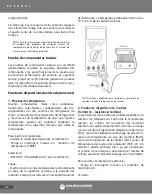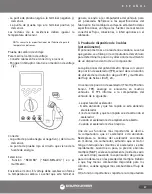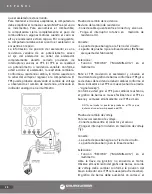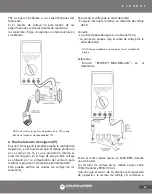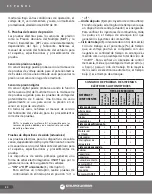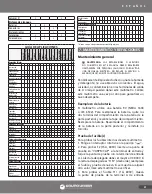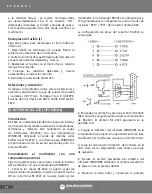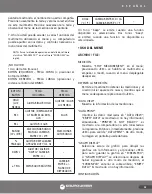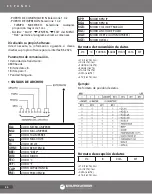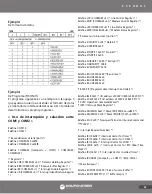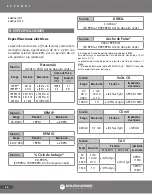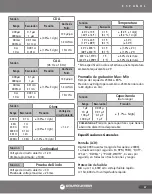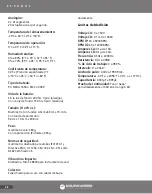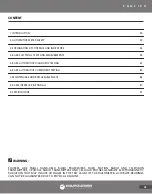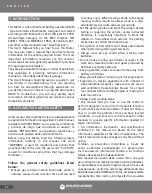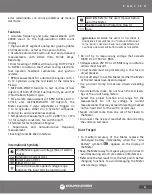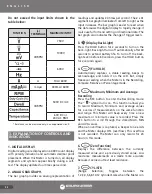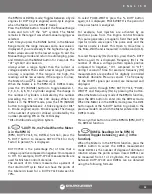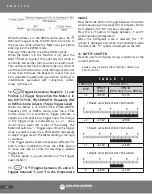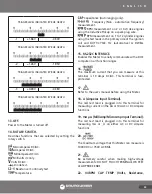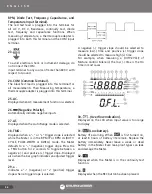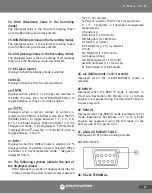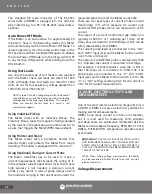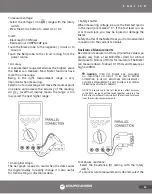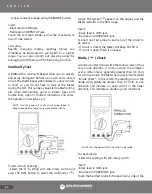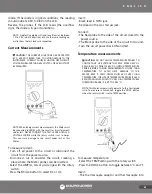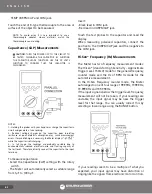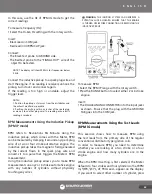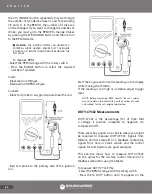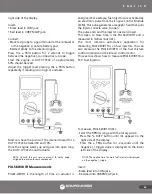
E N G L I S H
50
1. INTRODUCTION
This Meter is a hand-held and battery operated DMM
–type Automotive Multimeter, designed and tested
according to IEC Publication 1010-1 (EN 61010-1:1993)
(Overvoltage Category II) the EMC Directive (EN
50081-1:1992 and EN50082-1:1992), UL 1244 6 UL 201,
and other safety standards (see “Specifications”).
This User’s Manual tells you how to use this Meter.
You may also need a manual that provides technical
information for the vehicle you plan to test. The most
important information resources are the vehicle’s
service repair manuals generally available for purchase
through automotive dealers.
They are also available through a number of publishers
that specialize in providing technical information
manuals to the independent repair garages.
This User’s Manual should be used as a guide to get
you started in troubleshooting. Your real learning
can best be accomplished through experience. As
you become more proficient in using the Automotive
DMM to troubleshoot, you will very quickly learn
how certain electrical symptoms can relate to various
driveability problems.
2. AUTOMOTIVE METER SAFETY
Antes de usar este multímetro, lea la cuidadosamente
la siguiente información de seguridad. En este manual,
la palabra “ADVERTENCIA” se usa para las condiciones
y acciones de riesgo que conciernen al usuario; la
palabra “PRECAUCION” se usa para las condiciones y
acciones que pueden dañar este multímetro.
Before using this Meter, read the following safety
information carefully. In this manual, the word
“WARNING” is used for conditions and actions that
pose hazard(s) to the user; the user word “CAUTION”
is used for conditions and actions that may damage
this Meter.
Follow the general safety guidelines listed
below:
• Exhaust gas contains Carbon Monoxide, which is
odorless, causes slower reaction time and can lead
to serious injury. When testing vehicle with engine
running, testing should be always done in a well-
ventilated area or route exhaust gas outside.
• Set the parking brake and block the wheels before
testing or repairing the vehicle, unless instructed
otherwise. It is especially important to block the
wheels on front-wheel drive vehicles: the parking
brake does not HOLD the drive wheels.
• The ignition or fuel system must always be disabled
when performing starting systems tests.
• Always wear an eye shield when working near
batteries.
• Do not smoke or allow open flames or sparks in the
work area. Gasoline fumes and gases produced by
batteries are highly explosive.
• Keep cigarettes, sparks and open flame away from
battery at all times.
• Keep yourself clear of all moving or hot engine parts.
• Especially on marine applications with inboard or
inboard/outboard engines, make sure work area is
well ventilated. Operate bilge blower for at least
four minutes before starting engine or making test
lead connections.
• Always avoid working alone.
• This manual tells you how to use the meter to
perform diagnostic test and to find possible locations
of automotive electronic problems. It does not tell you
how to correct the problems. Once you have located
a problem, consult your car’s service manual or other
manuals to provide specific information needed for
repair instructions.
• All information, illustrations, and specifications
contained in this manual are based on the latest
information available at the time of publication. The
right is reserved to make changes at any time without
notice.
También se encuentran disponibles a través de
varios publicistas especializados en proporcionar
los manuales de información técnica a los distintos
talleres de reparación independientes.
Éste manual de usuario debe usarse como una guía
para iniciarlo en el manejo de detección de problemas.
Su aprendizaje real puede lograrse mejor a través de
la experiencia. Conforme usted vaya obteniendo más
habilidad usando el DMM automotriz, usted aprenderá
rápidamente cómo ciertos síntomas eléctricos pueden
Summary of Contents for UD88
Page 94: ...94 NOTAS NOTES ...
Page 95: ...95 NOTAS NOTES ...

